Interesting facts about Warsaw — 15 information about the Polish capital that will surprise you!
🕗 15 minutes | January 31, 2024 | Text Aleksandra Dudziak
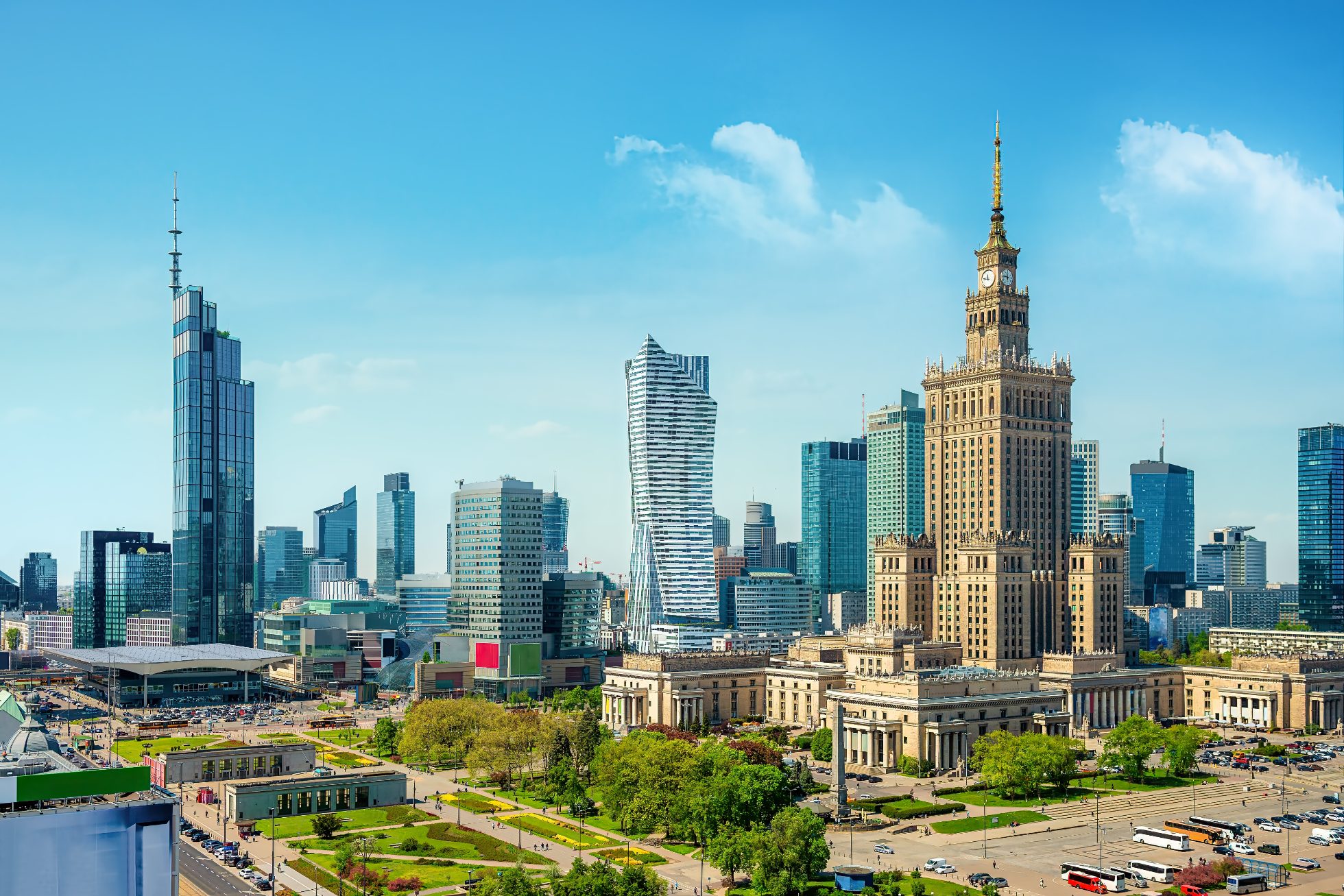
Whether you are a tourist, a history enthusiast, or simply a curious traveller, you are sure to find something here that will surprise you. We have prepared a list of fifteen intriguing facts about Poland's capital that showcase its diversity, cultural richness, and unique history.
✅ You will learn from this article:
- How wide is the world's narrowest house?
- What is controversial about the Palace of Culture?
- What were the names of Warsaw gangsters?
And much, much more!
- Encyclopedia of Warsaw
- The lesser-known side of Poland’s Capital – Interesting Facts
- Warsaw is home to the world's narrowest house!
- Warsaw was once a small fishing village on the Vistula River.
- Pre-war Warsaw was known as the "Paris of the North."
- Warsaw is the only Polish city with a metro system.
- A green capital of Europe – 40% of Warsaw is covered by greenery.
- Warsaw has the highest number of public libraries per capita in the world.
- Warsaw has been Poland’s capital for less than 100 years! (technically speaking)
- The official colors of Warsaw are yellow and red.
- Chopin's eternal heart – Warsaw is famous in Asia for its legendary composer.
- The city had its own notorious gangsters!
- The Palace of Culture and Science remains controversial.
- The Mermaid is Warsaw’s symbol.
- Warsaw is a city of kings – the Royal Route and Wilanów Palace.
- The historic Warsaw uprising left a mark on the city's architecture.
- The breathtaking rooftops of Warsaw.
- Summary
Also read:
Encyclopedia of Warsaw
Before getting to the surprising facts, it is worth mentioning the slightly more obvious information. There are places in the capital that you simply must know! Because Warsaw is the largest Polish city — iconic places have quite a lot! Take a flight to Warsaw and you will see for yourself.
Check prices for flights to Warsaw
Botanical Garden in Warsaw
Located in the very heart of Warsaw, the University of Warsaw Botanic Garden is a true oasis of peace. With over 200 years of history, it attracts both locals and tourists. Among its many plants, you can find unique species that amaze with their beauty. It is not only a place to relax, but also an important centre of education and research.
Tomb of the Unknown Soldier
The Tomb of the Unknown Soldier in Warsaw serves as a symbol of remembrance for those who gave their lives for their homeland. Located on Piłsudski Square, it is the site of state and patriotic ceremonies. This place reminds everyone of the heroism and sacrifice of the soldiers who fought for Poland’s freedom.
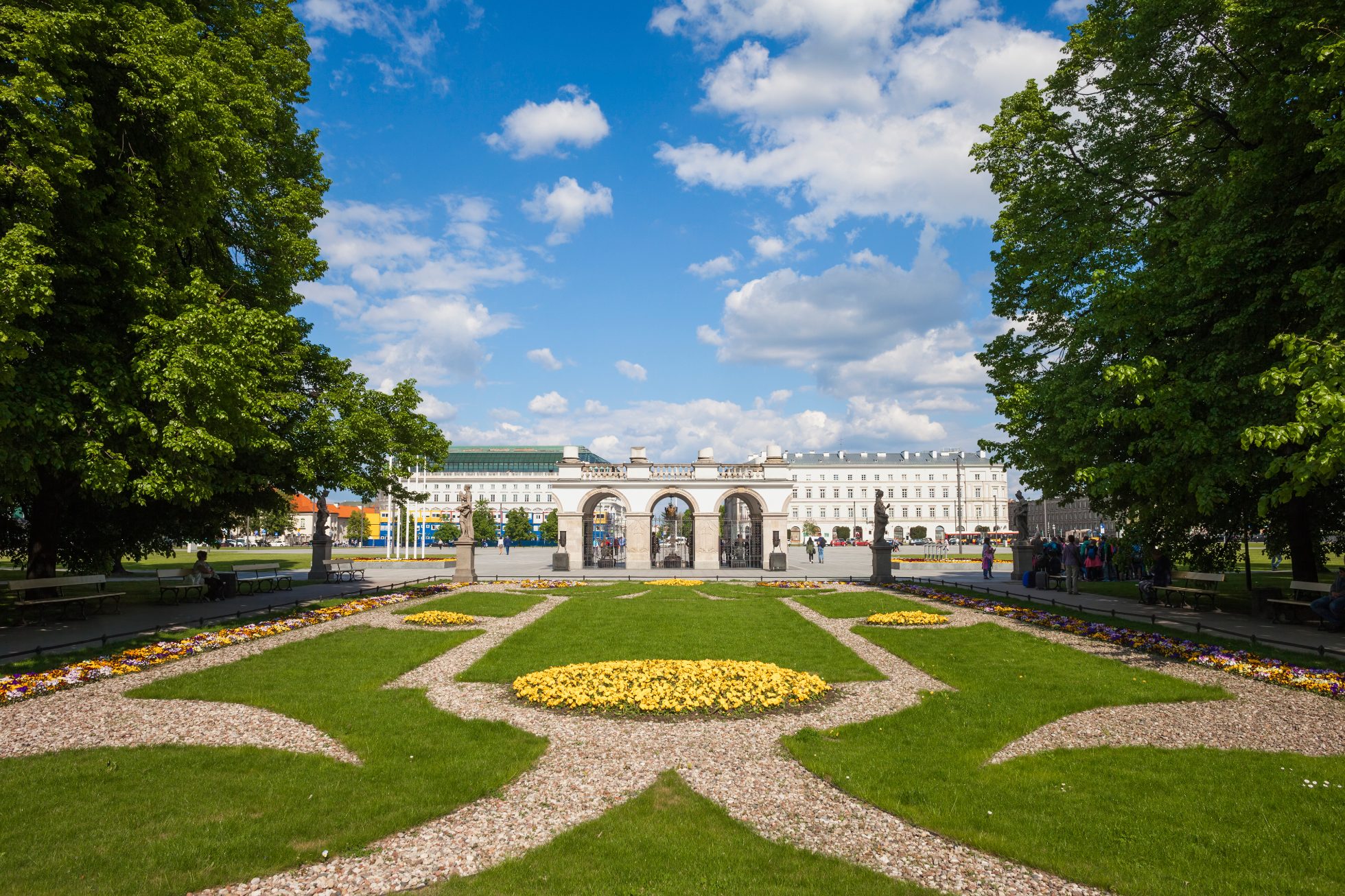
Mirowska Hall
Mirowska Hall is one of the most famous shopping destinations in Warsaw. With a rich history dating back to the early 20th century, the building is not only a place for shopping, but also a gathering spot for the city’s residents. Here you can find fresh produce straight from farmers, as well as delicious regional specialities.
Old Town
The Old Town in Warsaw is a place that everyone should visit. Rebuilt after wartime destruction, it is an example of Poles’ determination to restore their heritage. Narrow streets, colourful town houses, and the majestic Royal Castle create an atmosphere that delights tourists from around the world.
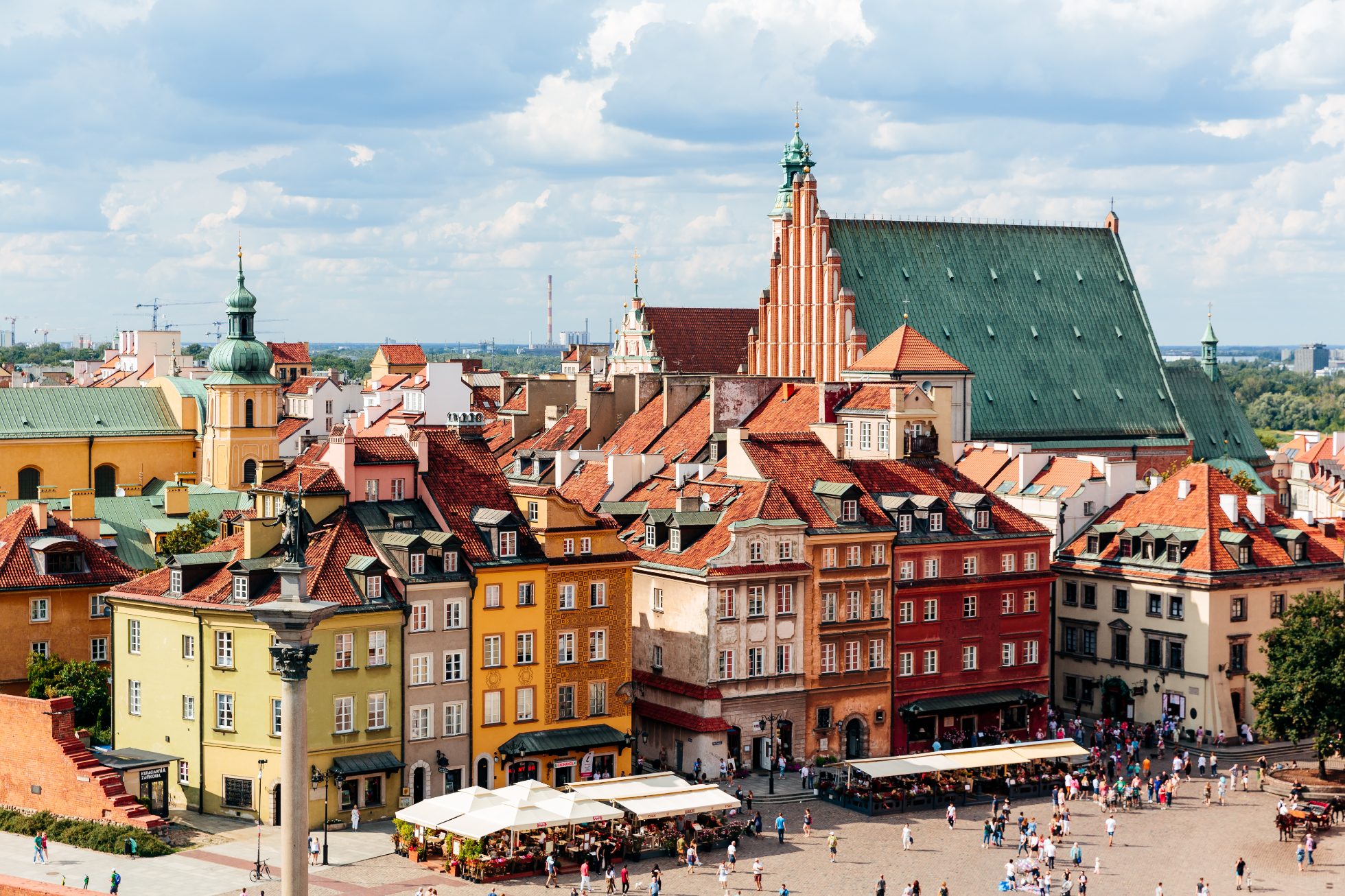
Stara Praga
Stara Praga is a district that has retained much of its historic character. Walking through its streets, you’ll sense the atmosphere of old Warsaw. Praga is well-known for its artistic murals, cosy pubs, and numerous art galleries, making it one of the most creative places in the city.
The Neon Museum
The Neon Museum in Warsaw is a place that transports visitors back to the Polish People’s Republic era, when colourful neon signs lit up the streets of Polish cities. It is the only museum of its kind in the country, presenting not only art but also the history and culture of that time.

Powazki Cemetery
Powązki Cemetery is one of the oldest and most renowned burial grounds in Poland. Outstanding Poles from various fields — ranging from artists to politicians — are laid to rest here. As you walk among the historic tombstones, you will sense the spirit of Warsaw’s and Poland’s history.
Puszcza Kampinoska
Puszcza Kampinoska (the Kampinos Forest) is a vast woodland area located just west of Warsaw, protected by the Kampinos National Park. Renowned for its rich biodiversity, it’s home to numerous species of flora and fauna. With many hiking and cycling trails, the Kampinos Forest is a popular destination for nature lovers and those seeking active outdoor recreation.
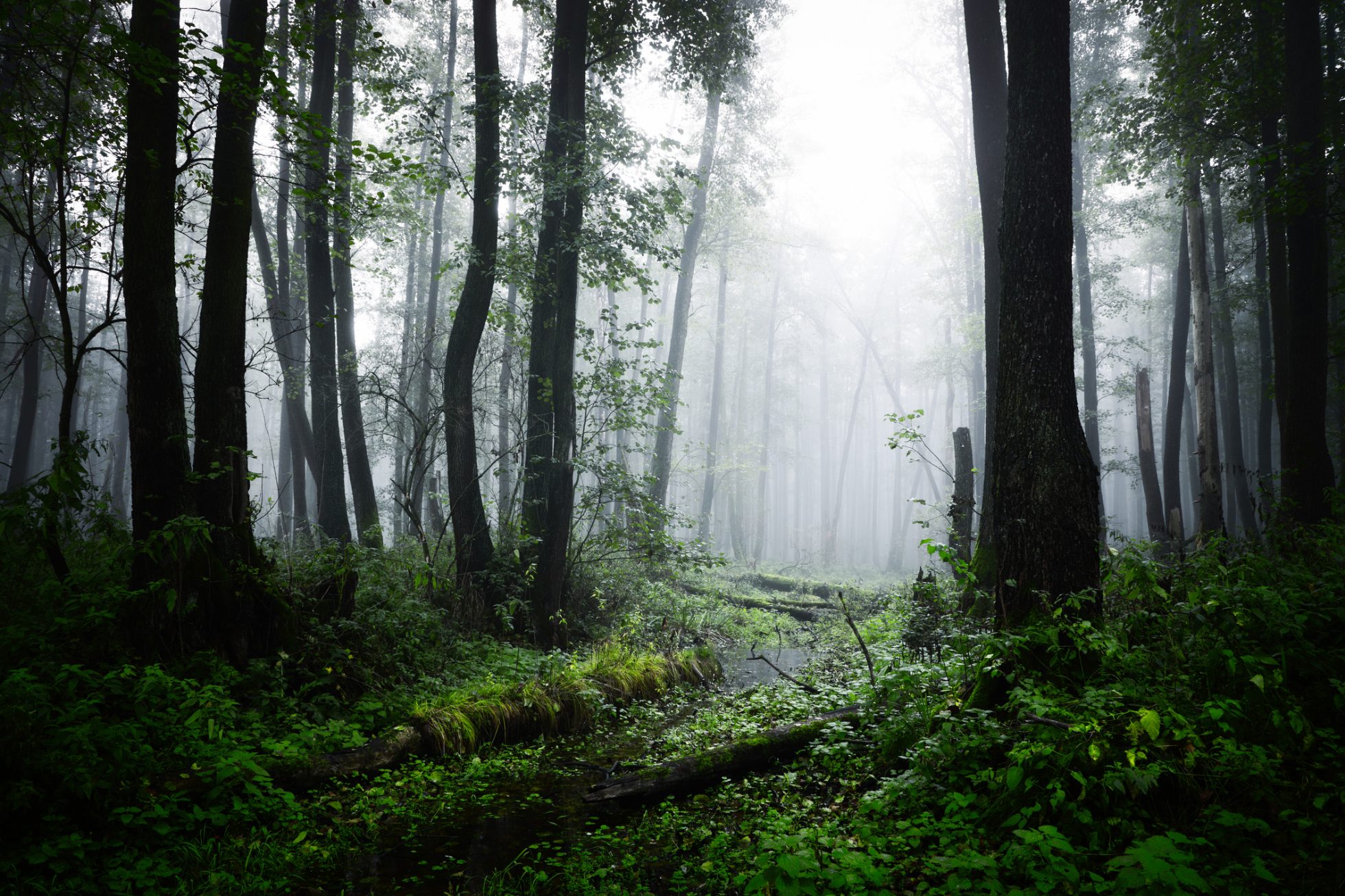
Hala Koszyki
Hala Koszyki is one of the trendiest spots in Warsaw for dining and entertainment. It hosts numerous restaurants, cafés, and bars offering various cuisines from around the world. The place is bustling with life at any time of day or night, and its unique design attracts both locals and tourists. Strolling through the hall, you can sample new flavours, buy fresh products, and enjoy the venue’s distinctive atmosphere.
Sigismund’s Column
Sigismund’s Column is one of the most recognizable symbols of Warsaw, proudly rising on Castle Square. It is the oldest secular column in Poland and an integral part of the city. Erected in honour of King Sigismund III Vasa, the column serves as a meeting point for both locals and tourists. It also provides a perfect backdrop for photos and a starting point for exploring the Old Town.
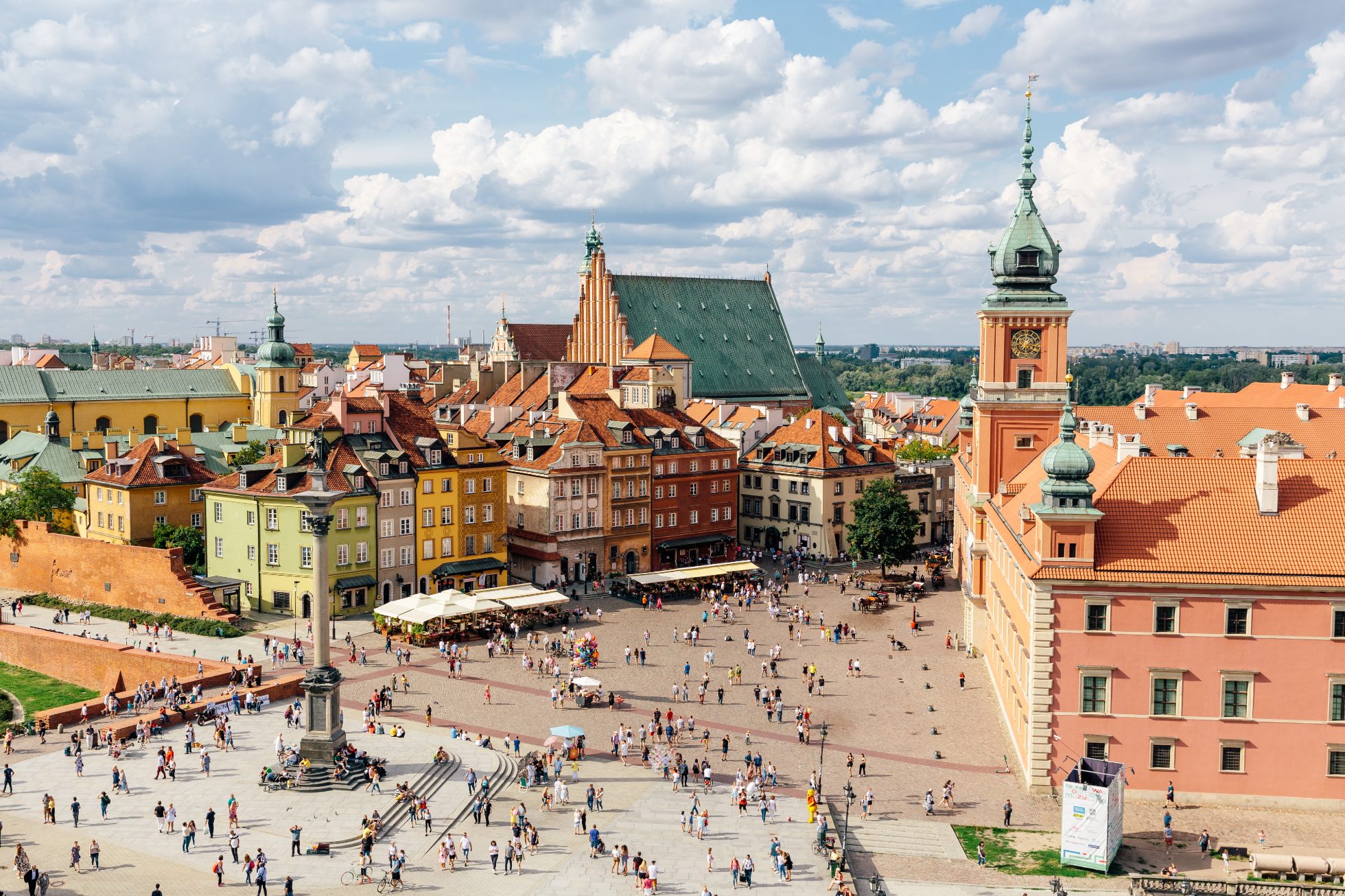
Czerniakowskie Lake
Located in Mokotów, Jeziorko Czerniakowskie is the largest natural body of water in Warsaw, attracting water sports enthusiasts and lovers of outdoor recreation. This place offers opportunities for swimming, kayaking, and sailing, as well as relaxation on the beach. Numerous walking and cycling paths can be found around the lake.
Vistula – the river around which life is vibrant
Life along the Vistula is vibrant all year round. In the summer, both locals and tourists take advantage of the many beaches, promenades, and bars along the riverbank. The stairs by the Vistula even have their own musical piece. It is also a place where concerts and festivals take place, drawing large crowds.
For those who wish to cross the river, the Świętokrzyski Bridge (famously featured in the Polish film Never in My Life) comes to the rescue. As one of the most modern bridges in Warsaw, it offers incredible views of the city. Another popular spot is the “pedestrian and cyclist only” Bridge to Praga, which was opened relatively recently — in 2024.
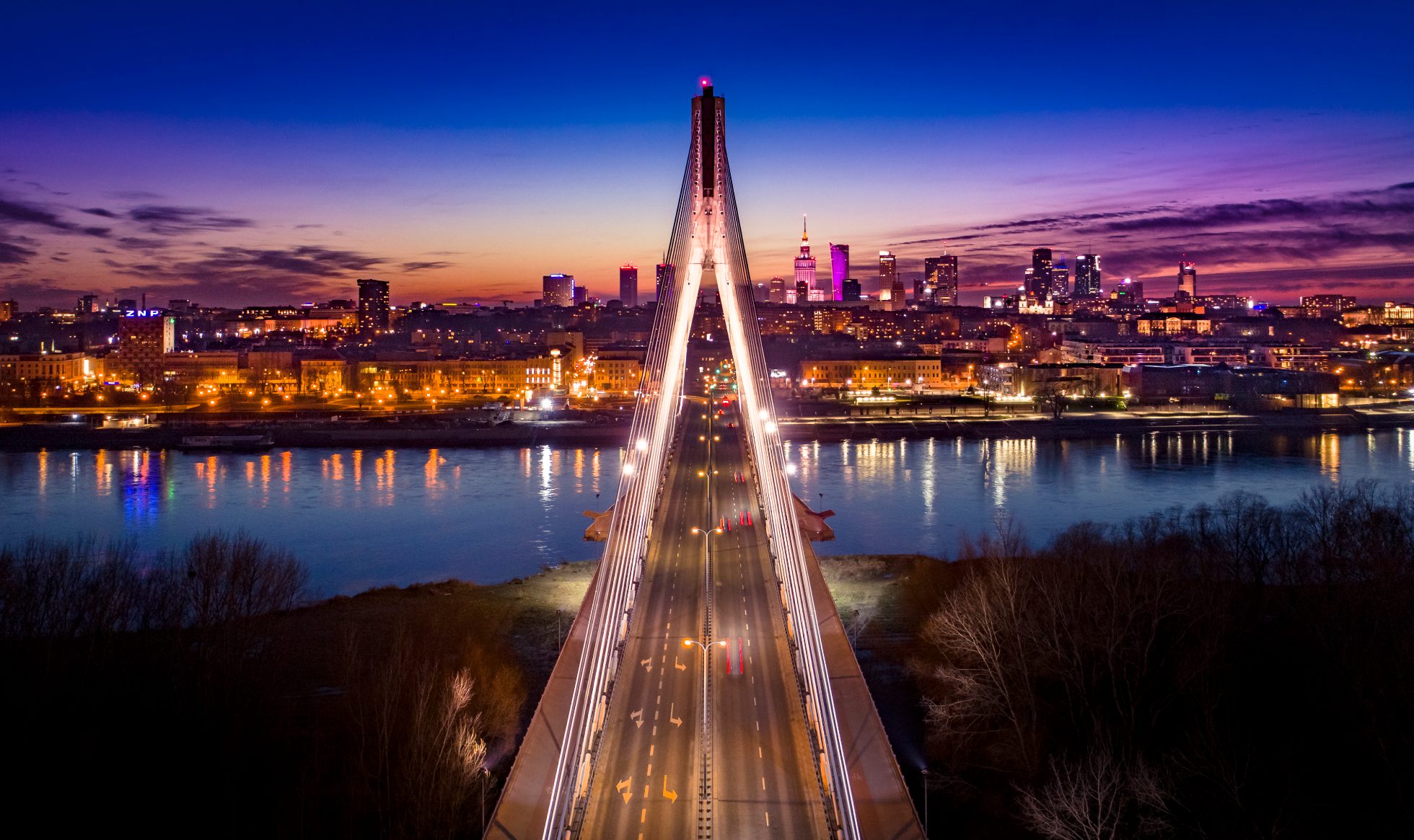
National Stadium
The National Stadium is one of the most important sports arenas in Poland. Opened in 2012, it quickly became one of the symbols of modern Warsaw. The stadium has hosted many international sporting events, including the UEFA EURO 2012 Football Championship. In addition, it has welcomed stars such as Taylor Swift, Beyoncé, Coldplay, Ed Sheeran, The Weeknd, and Metallica during concerts.
Copernicus Science Centre
Located in the centre of Warsaw, the Copernicus Science Centre (a modern science centre popular among locals) is a popular destination for school trips and visits by science enthusiasts. Calling it the most interesting museum in Warsaw would not be an exaggeration — if you can even call this space a museum at all?
The Copernicus Science Centre is a place where you can learn a great deal about physics, chemistry, psychology, or cognitive science by interacting with exhibits specifically designed for that purpose. You can chat with a robot, test your intellect with logic puzzles, or check your knowledge on one of the dedicated screens. We also recommend attending a show at the planetarium, which will take you on a journey through the cosmos and introduce you to the proper names of the constellations above your head.
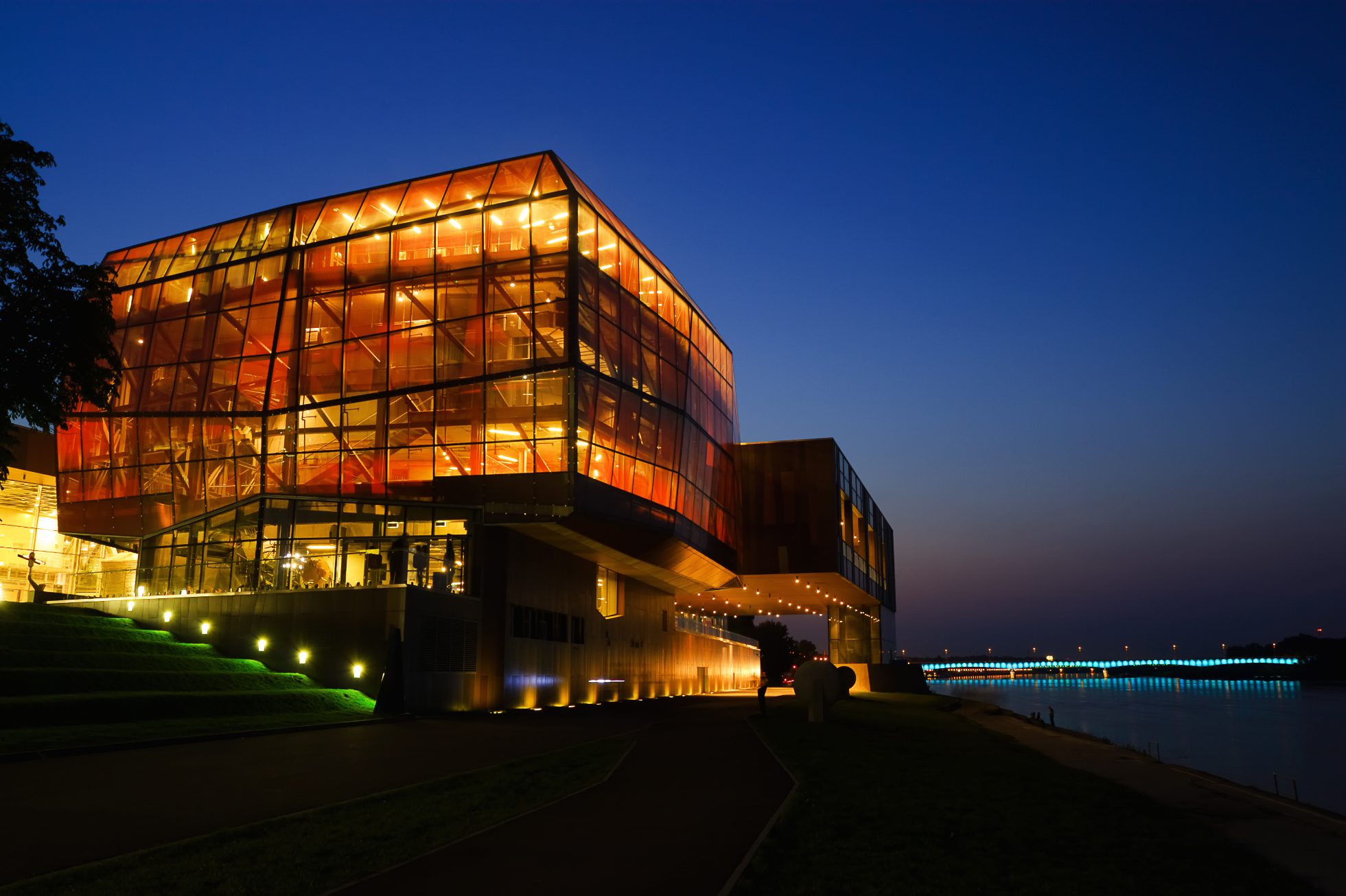
Warsaw upising museum
The Warsaw Uprising Museum is a place that everyone should visit to gain a more profound understanding of the capital's history. The museum is dedicated to one of the most significant and tragic events in Warsaw’s history — the Warsaw Uprising of 1944 (a major resistance effort against Nazi occupation during World War II). Interactive exhibits, unique artefacts, and moving eyewitness accounts allow visitors to step back in time and appreciate the immense sacrifices the people of Warsaw made for freedom. This place, which educates, moves, and inspires, is arguably the best-known museum in Warsaw.
Check flight prices to Warsaw
Less known side of the capital of Poland — curiosities
Now that the formalities are behind us, it's time to have a closer look at some less obvious details about Warsaw. Poland's largest city hides many secrets. Check how many of them you know.
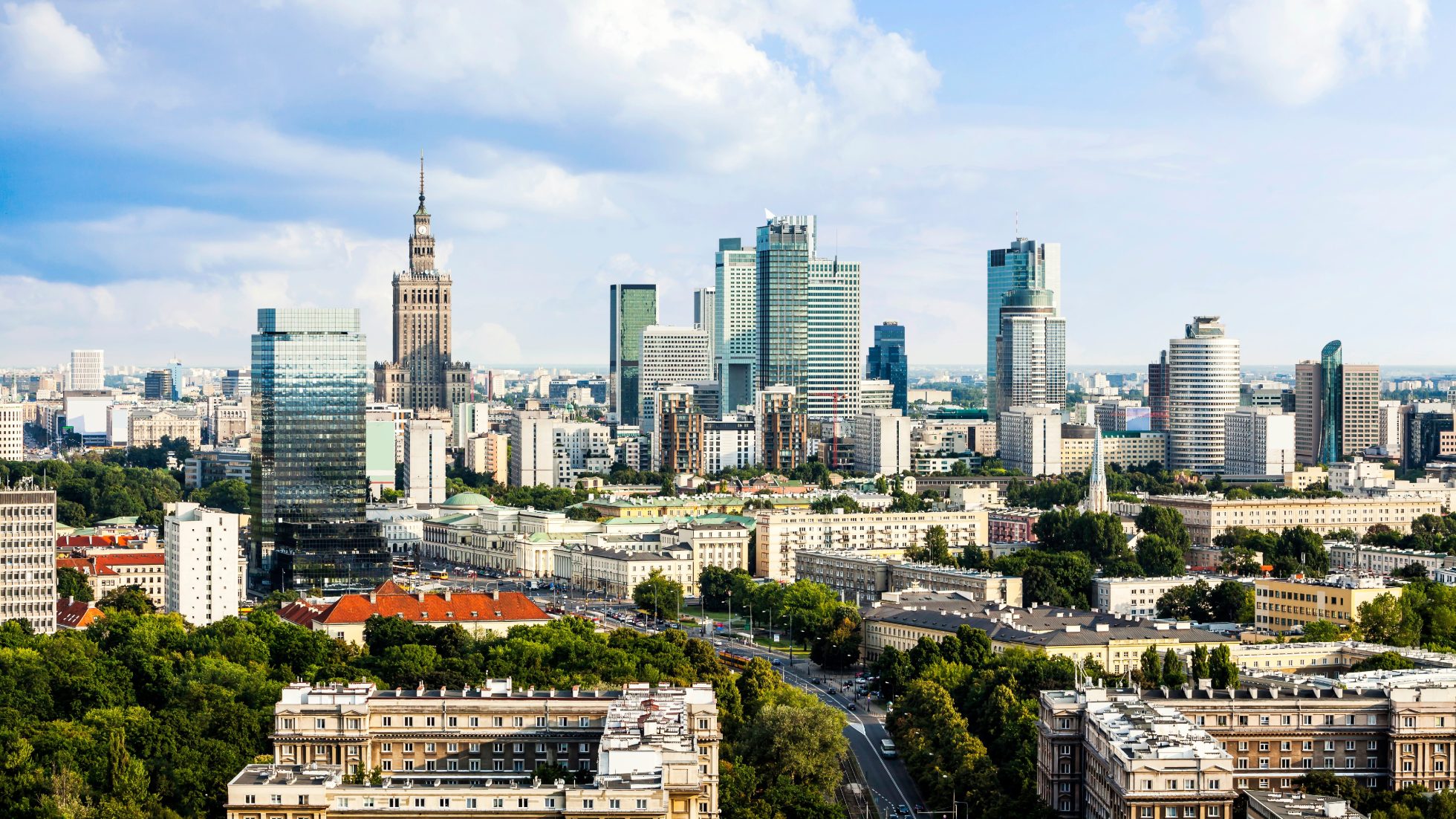
1. In Warsaw, there is the narrowest house in the world!
Did you know that in Warsaw, there is a house that is only 152 centimetres wide? It is the smallest residential building not only in Warsaw and Poland, but also in the world. Called the Keret House, it was designed by architect Jakub Szczęsny. It stands as a symbol of the creativity of Warsaw's architects.
Despite its small size, the interior contains all the essential amenities for living—such as a kitchen, a bathroom, and a bedroom. The house is open to artists and visitors from around the world, and its unique design captures the attention of tourists.
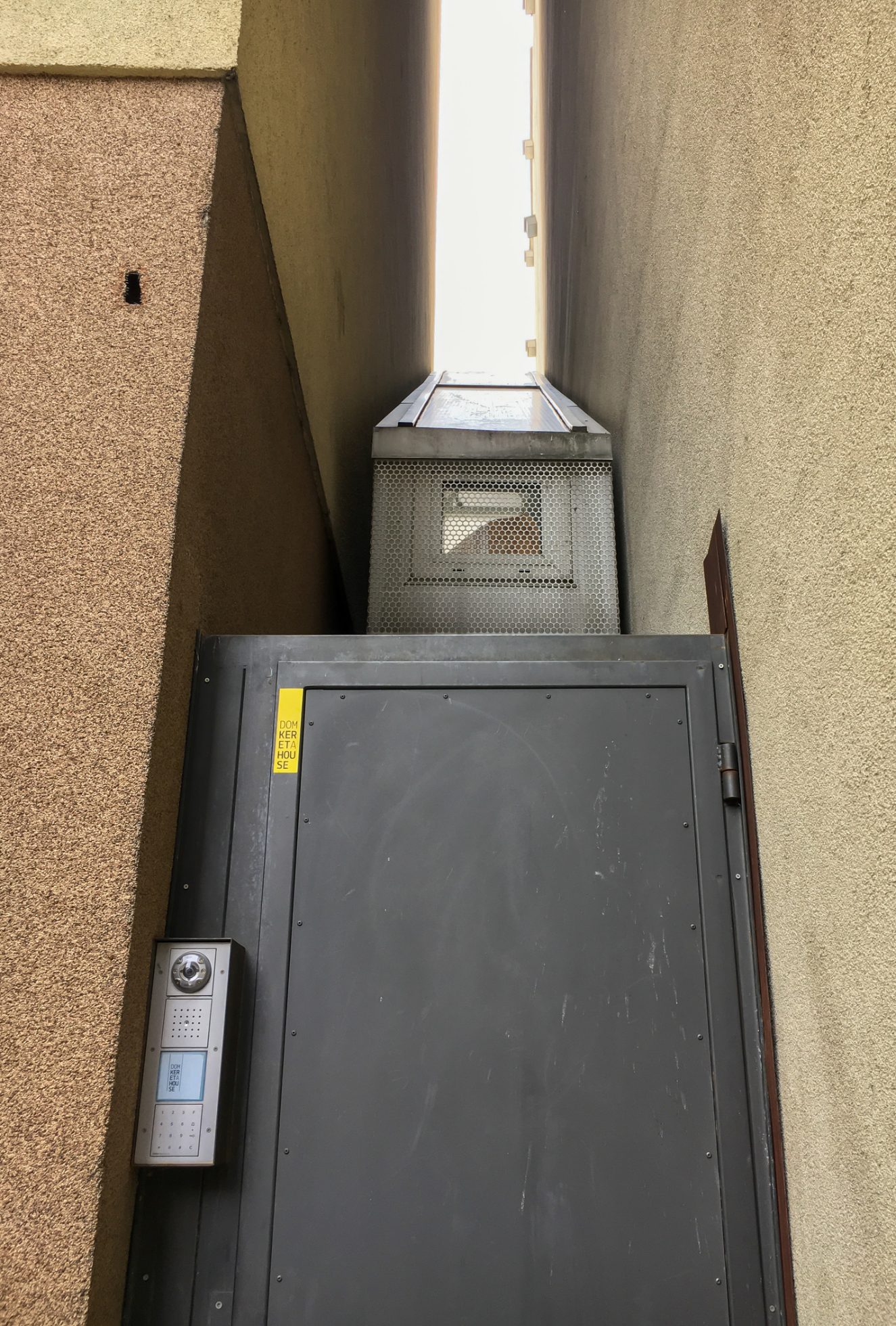
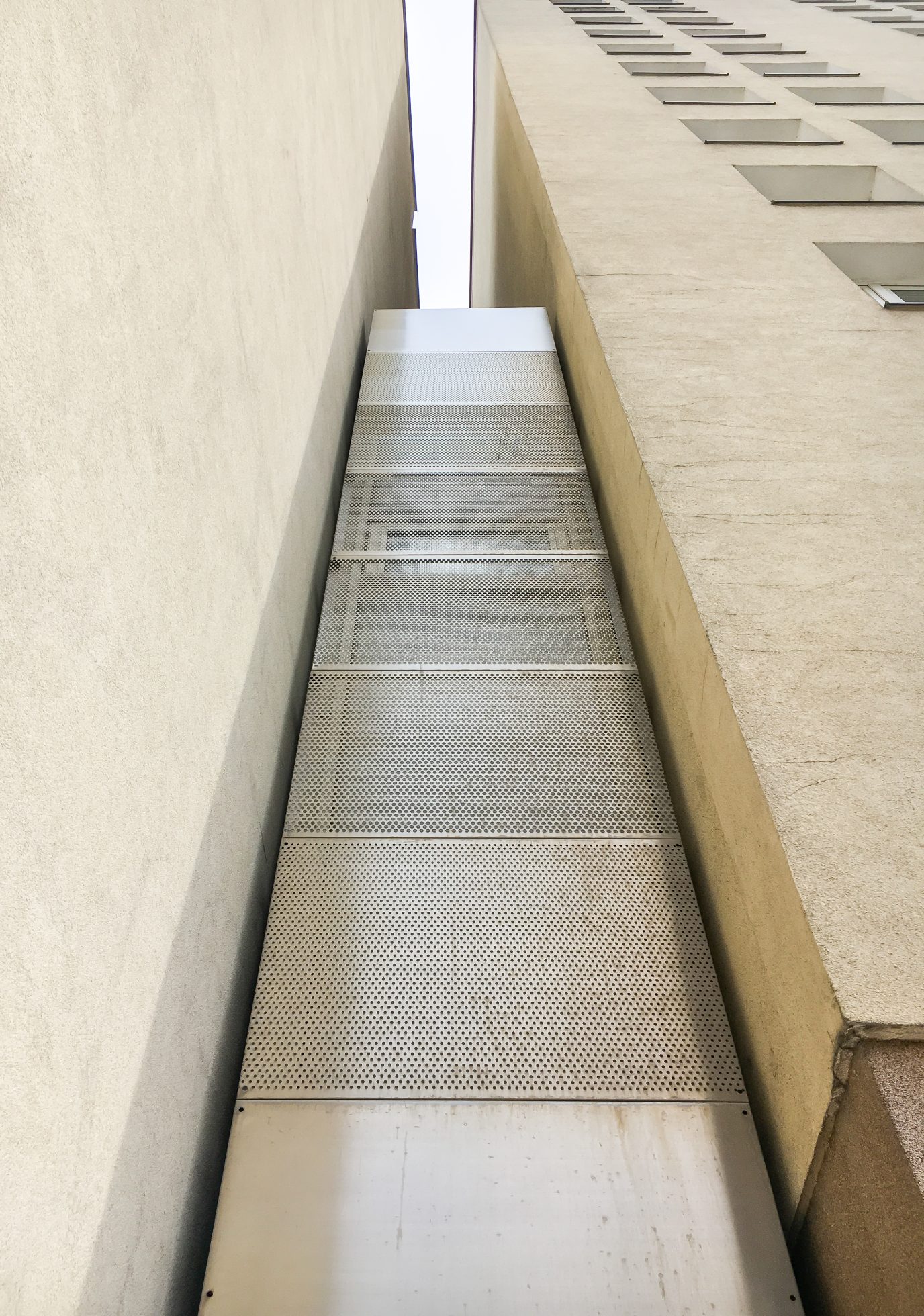
2. Warsaw was once a fishing settlement on the banks of the Vistula
Before becoming the capital of Poland, Warsaw was a small fishing settlement on the banks of the Vistula (the longest river in Poland). Its origins date back to the 13th century, when the first settlers began building their homes along the river. Over time, the settlement developed, attracting an increasing number of residents. The Vistula was not only a source of sustenance, but also an important trade route — a factor that fostered the city's growth. Today, Warsaw ranks seventh in the European Union in terms of population. The city is home to over 1.8 million residents and spans an area of more than 515 km².
Referring back to the origins of the capital — an intriguing aspect is the alleged history behind the name of metropolitan Warsaw. The name most likely derives from a diminutive of the popular medieval name Warcisław — Warsz. This name was borne by members of the Raw family (a notable Polish noble family) who owned land in the settlement by the Vistula. Essentially, Warsaw means “the settlement of Warsz.”

3. Pre-war Warsaw was “the Paris of the North”
Before the outbreak of World War II, Warsaw was known as “the Paris of the North.” This comparison stemmed from the elegance of its architecture, its vibrant cultural life, and the atmosphere that could be experienced on the city’s streets. Warsaw was an intellectual and artistic hub, drawing writers, musicians, and artists from all over the world. Elegant cafés, theatres, and art galleries added a certain charm to the city — while its residents enjoyed life at the highest level.
Reclaiming the title of “the Paris of the North” after the war became one of the key goals in rebuilding the city. Although many historical landmarks and buildings were destroyed, the people of Warsaw did not give up and rebuilt their city with determination and passion. Today, Warsaw once again boasts beautiful structures and a thriving cultural scene, proving itself a worthy successor to its pre-war splendour.
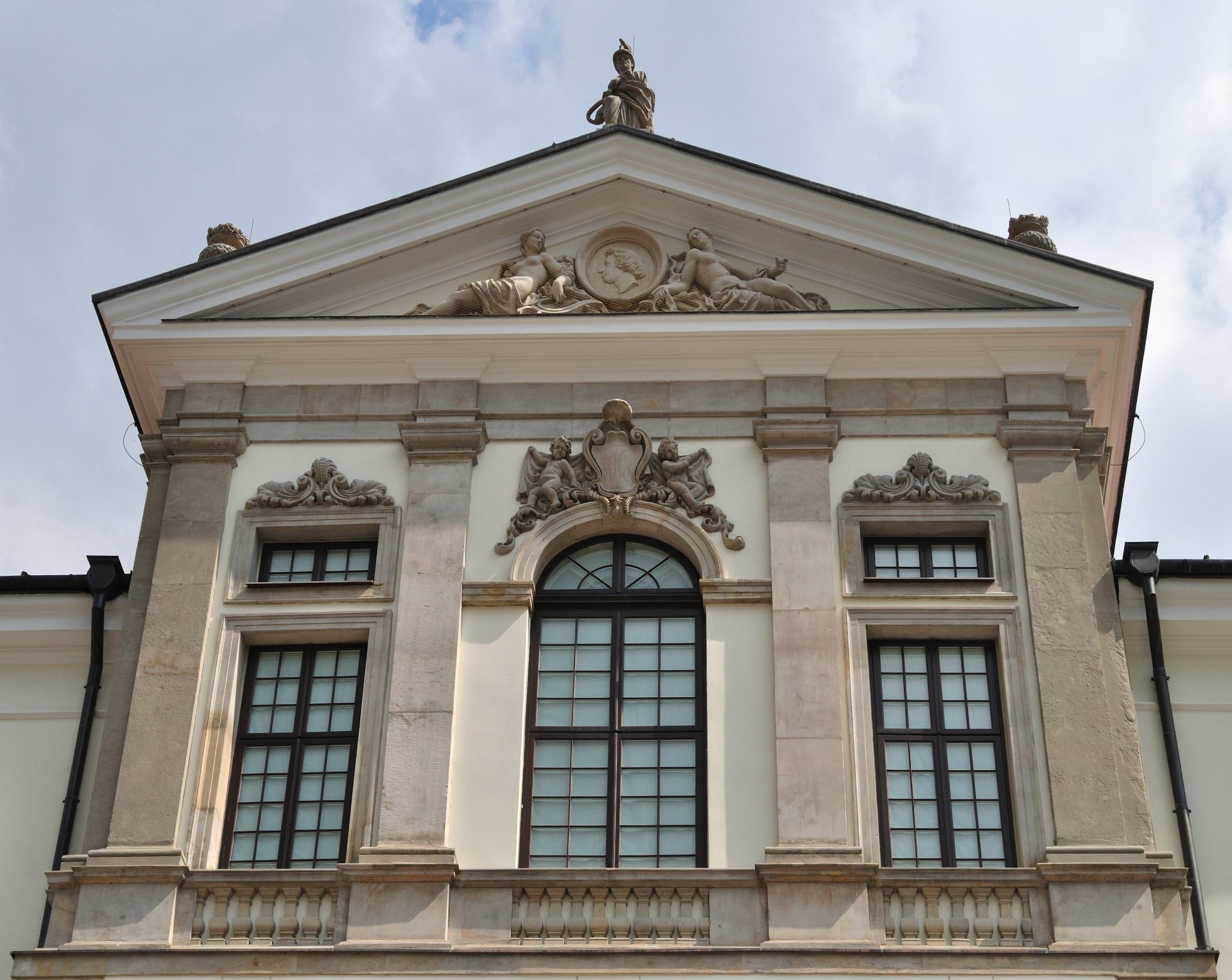
4. Warsaw is the only Polish city with a metro system
Warsaw is the only city in the country that has a metro system. The first line was opened in 1995 by Marcin Święcicki, then the mayor of Warsaw, and its development continues to this day. The Warsaw metro is a convenient and fast mode of transportation that carries thousands of residents and tourists every day. Further expansion of metro lines is planned for the coming years — aimed at making it easier to navigate the increasingly crowded city.
This spot even made its way into pop culture, thanks to the song “Następna stacja” by Taco Hemingway (a popular Polish track that references many of the Warsaw metro stations).
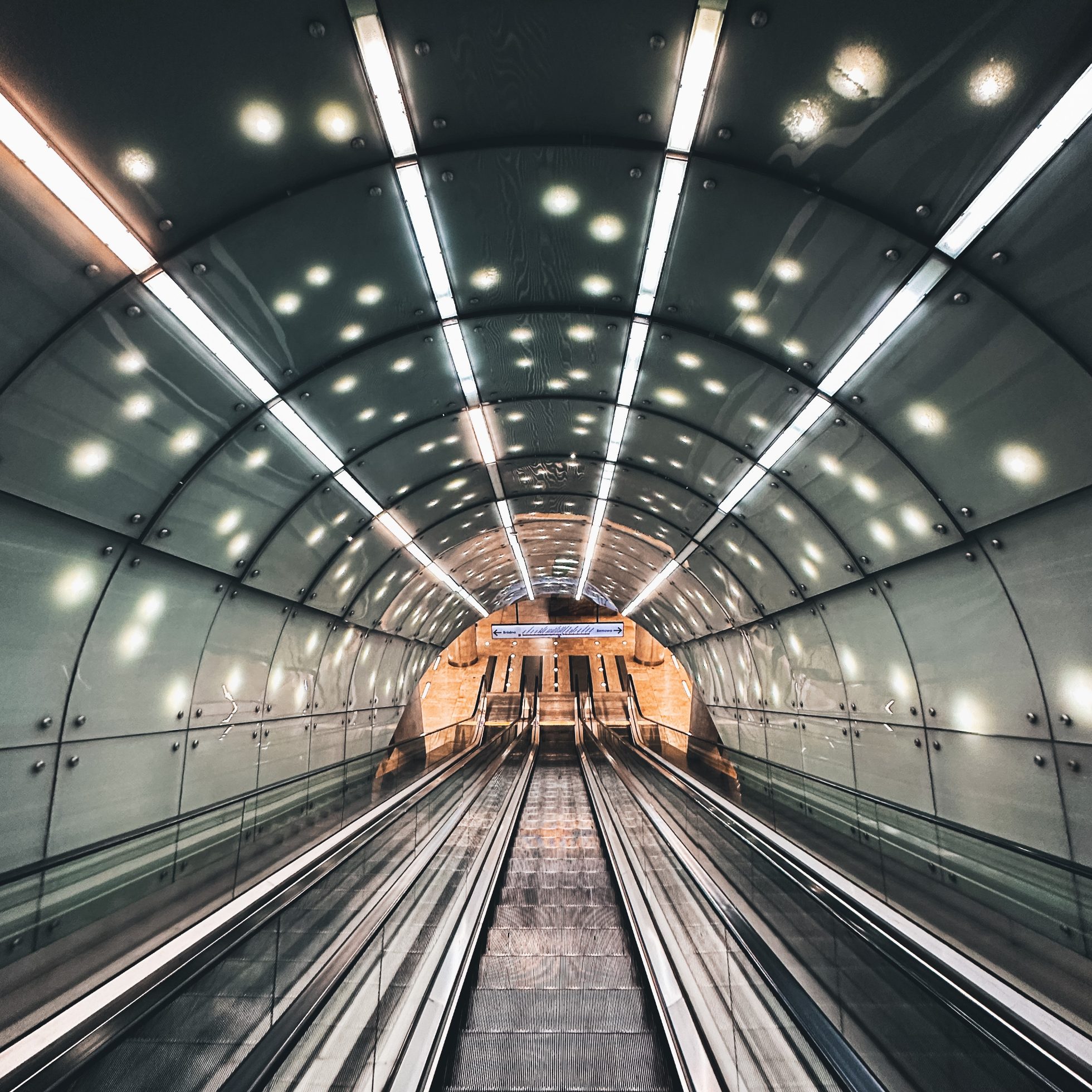
5. Green capital of Europe — 40% of Warsaw's area is covered by greenery
Warsaw is not just a concrete jungle — it's also a city full of greenery. As much as 40% of its area is made up of parks, forests, gardens, and green spaces, creating a welcoming environment for both residents and tourists. Some of the most notable parks include Łazienki Królewskie (Royal Baths Park, a historic park in central Warsaw) and Park Skaryszewski (Skaryszew Park, one of Warsaw's oldest parks), which offer the chance to relax amidst beautiful nature.
In one such green spot — near the Natolin Forest in Ursynów (a district in Warsaw) — stands one of the oldest trees in Poland, the Mieszko I Oak, which is about 600 years old. This unique natural monument witnessed the birth of Bolesław Prus (a renowned Polish writer), saw the opening of the Warsaw metro, observed the tenure of the city's first mayor, and even lived through both World Wars.
Greenery plays a crucial role in shaping the city's climate and improving air quality. Taking care of urban vegetation is a key part of the capital's environmental policy, and investments in green areas contribute to enhancing the quality of life for its residents.
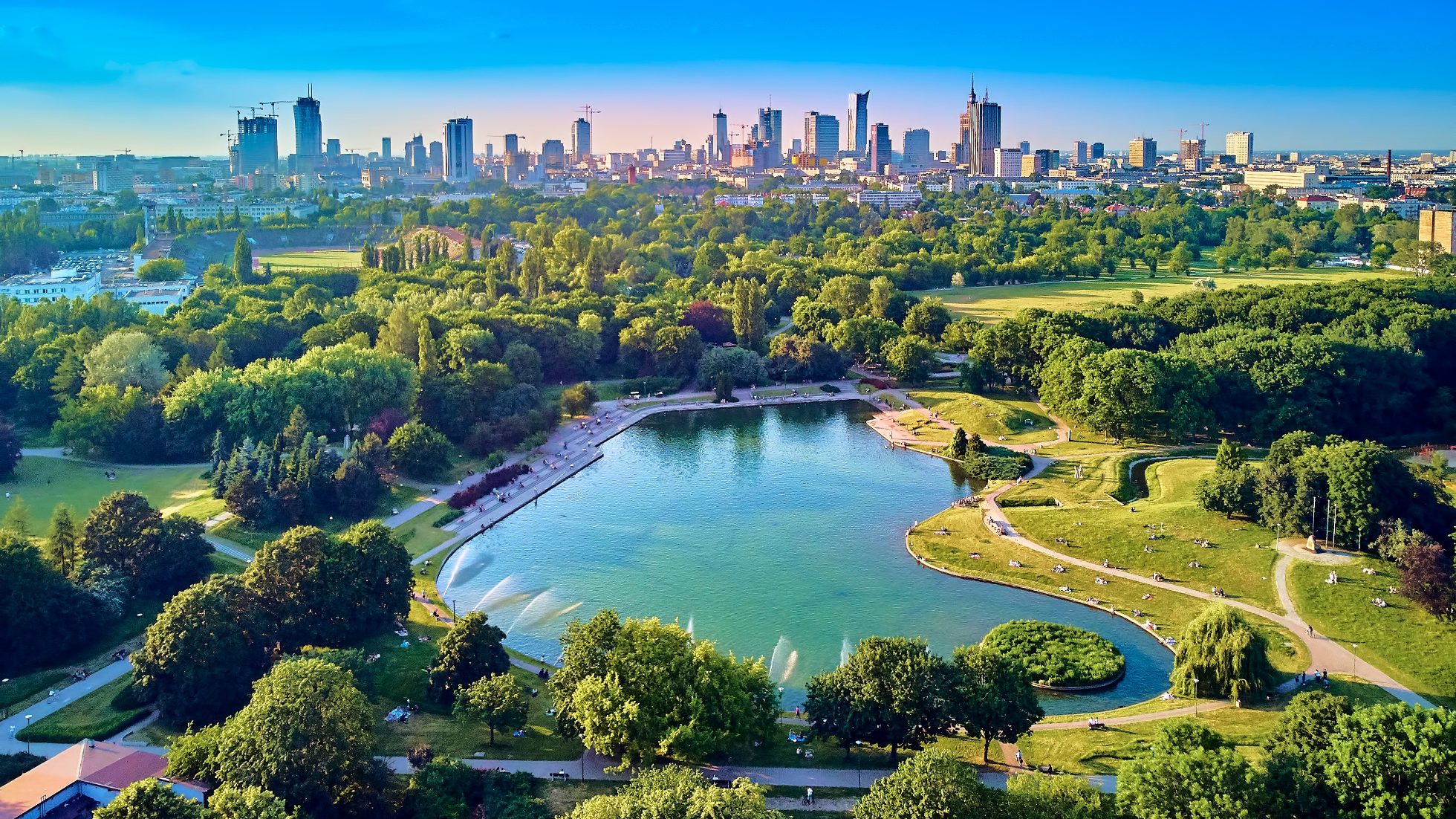
6. Warsaw is the best place in the world in terms of the number of public libraries
Warsaw boasts an impressive number of public libraries available to both its residents and tourists. The city offers over 200 libraries, making it one of the best places in the world in terms of access to books and knowledge. These libraries feature rich literary collections and host various cultural events — such as author meetups, workshops, and exhibitions.
Established in Warsaw in 1747, the Załuski Library — the first public national library in Europe (now known as the National Library, located at Aleja Niepodległości 213 in the Mokotów Field) — holds a significant place in history. Meanwhile, the University Library, situated near the Copernicus Science Centre and the Powiśle Power Station, is open around the clock, making it particularly popular among students preparing for exam sessions.

7. Warsaw has been the capital of Poland for less than 100 years! (technically speaking)
Although Warsaw is commonly associated with Poland as its capital, it has actually served that role for less than 100 years. For centuries, Kraków was the capital. While it is often said that Warsaw has been the capital of Poland since 1596, that is not entirely accurate — at that time, only the king and his court were relocated to Warsaw. In reality, it was only declared the capital of Poland in 1918, with its official status being recorded in 1952 in the Constitution of the Polish People's Republic. Since then, the city has developed dynamically, becoming the political, economic, and cultural centre of Poland.
The change of the capital had a significant impact on Warsaw's development, leading to increased investments and an influx of people. The decision to designate Warsaw as the capital was pivotal for the city's modernization and subsequent growth. Today, the capital city of Warsaw stands as one of the most important hubs in Poland, attracting investors, students, and tourists from around the world.

8. The colors of the capital of Warsaw are yellow and red
The colours of Warsaw originate from the city's coat of arms, which features the Warsaw Mermaid (a legendary symbol of the city) holding a raised sword in her right hand and a round shield in her left. The natural hues of the mermaid's body and tail, along with her golden hair, complement the golden sword and shield. Above the shield is a royal crown, while the shield itself is red. These colours appear on many flags, banners, and emblems associated with the city — as well as on sports stadiums where teams representing the capital receive support.
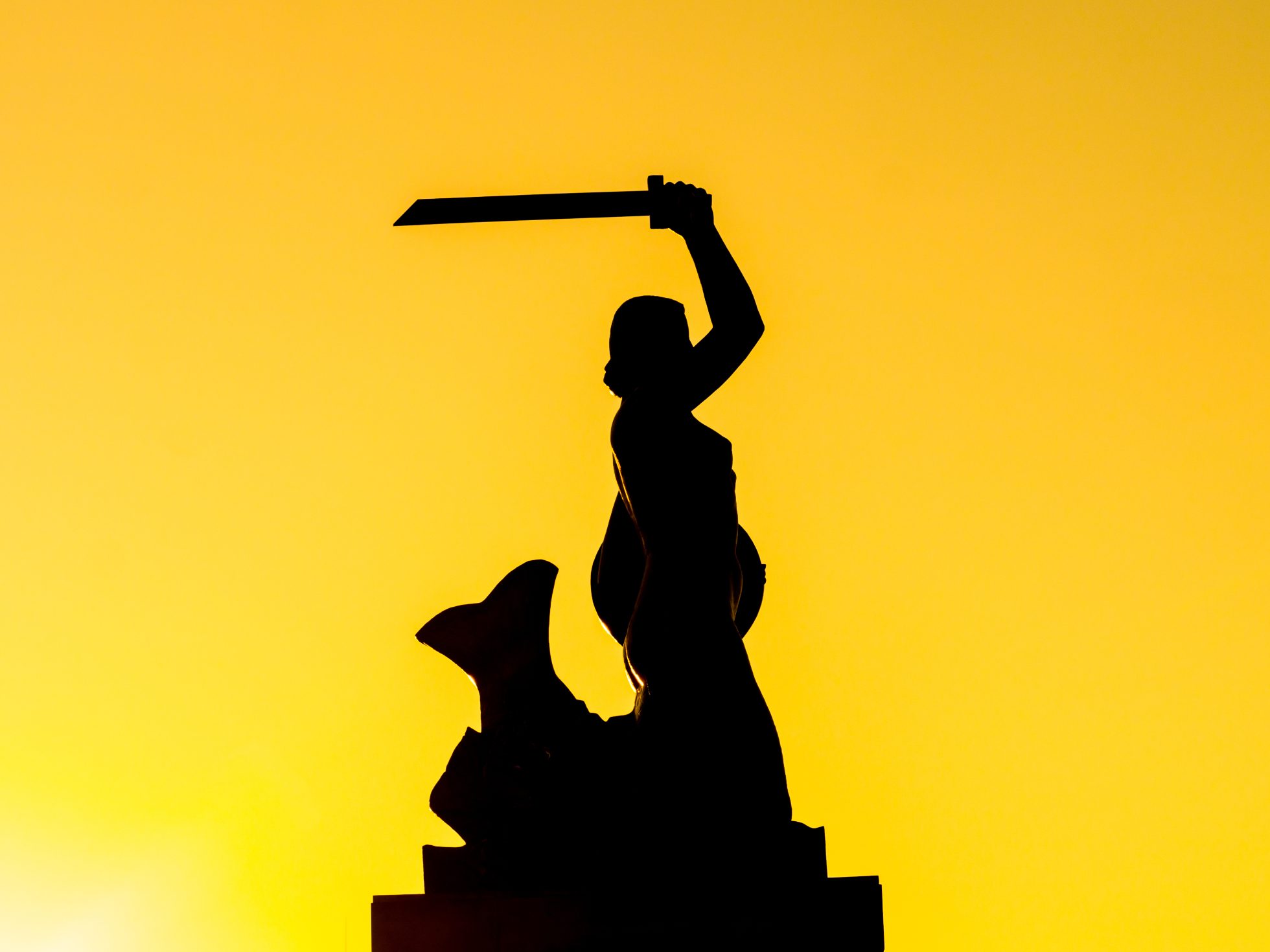
9. Eternal heart of Chopin — in Asia, Warsaw is famous for its renowned musician
Although Warsaw is primarily known in Asia as the city of Fryderyk Chopin, one of the most renowned Polish composers, his music enjoys tremendous popularity in Asian countries such as Japan and China. Numerous concerts and festivals celebrate his work. The Chopin Monument in Łazienki Królewskie (Royal Baths Park) is frequently visited by tourists from Asia, who come to pay tribute to this great artist.
The story of the composer's heart is also fascinating — he wished for his heart to return to his beloved Warsaw after his death. In accordance with his last will, his sister transported his heart, which subsequently underwent several perturbations and journeys before finally being permanently enshrined at the Church of St. Cross in Warsaw.
Chopin's popularity in Asia contributes significantly to the promotion of Warsaw as a city of culture and music. Chopin festivals and competitions attract young musicians from around the world who wish to share their passion for his compositions. As a result, Warsaw is emerging as an important musical centre that draws artists and music lovers from various countries.

10. The capital had its famous gangsters!
Warsaw has not always been a calm and safe city. Before the war, the capital had its famous gangsters who struck fear into the hearts of its residents. Among the most well-known were Tata Tasiemka and Doktor Łokietek — figures who dominated the criminal underworld in the 1920s and 1930s. Their activities included theft, extortion, and illegal trade, and their influence extended far beyond the city's borders.
The history of Warsaw's gangsters is well documented in books and films that recount their lives and deeds. Although those times have long passed, the fascination with Warsaw's pre-war criminal world remains, and stories of these gangsters continue to captivate both residents and tourists. This intriguing chapter in the city's history highlights its diversity and dynamic development over the years.
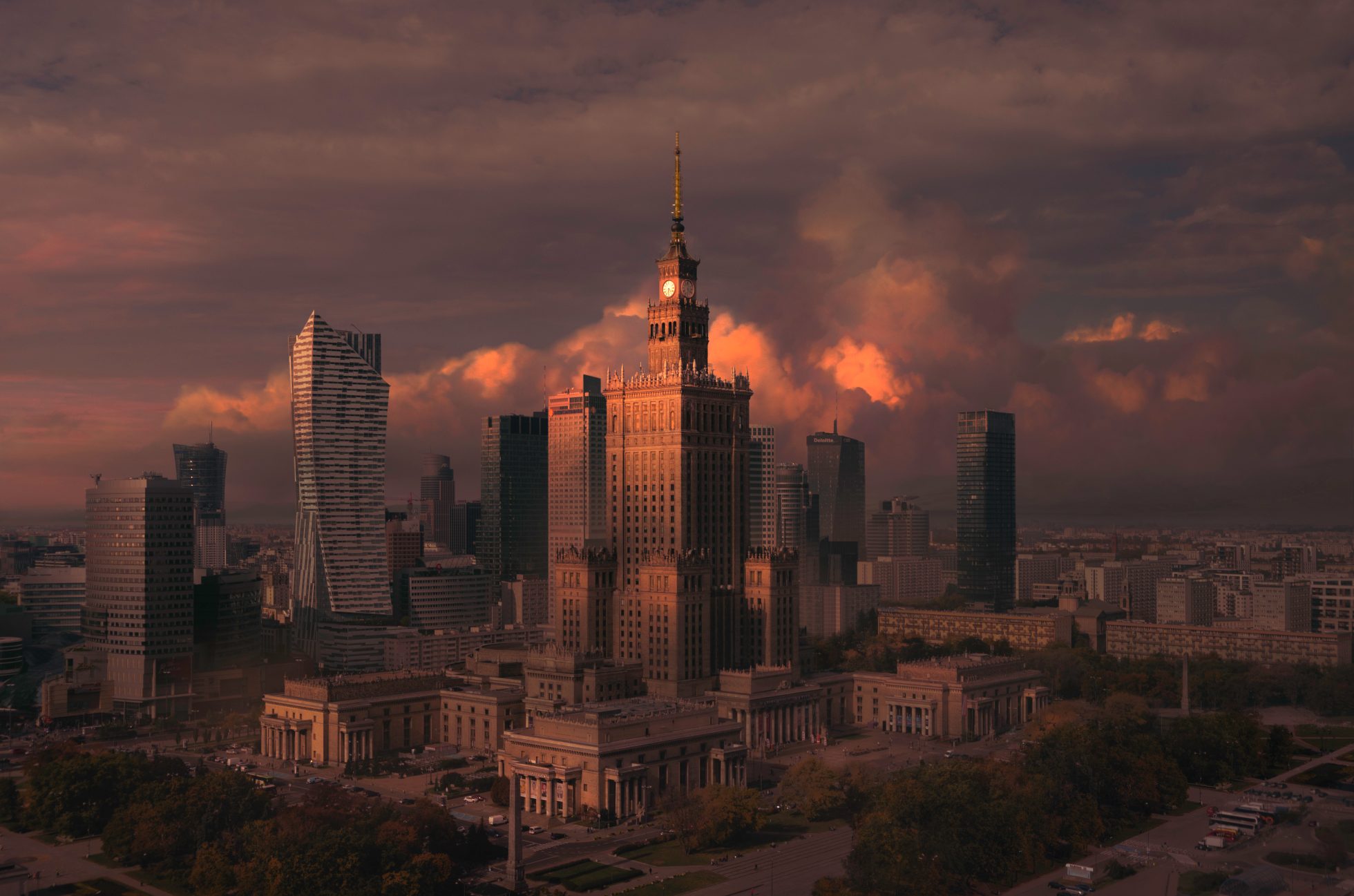
11. The Palace of Culture and Science stirs controversy
The Palace of Culture and Science is one of Warsaw’s most recognizable symbols, but it is also a building that evokes mixed feelings. On one hand, it is an impressive structure whose monumental architecture attracts tourists from around the world. Many people believe that the palace adds charm to the city and is an important element of its skyline.
On the other hand, for many residents, it stands as a relic of a bygone era — a symbol of Soviet domination over Poland. Its construction was a decision imposed by Joseph Stalin, which leads some to view it as an unwanted legacy and a reminder of the difficult times of communism.
Despite the controversies, the Palace of Culture and Science plays a significant cultural and social role. It houses numerous institutions — including theatres, cinemas, museums, and a conference centre. For many locals, the palace has become a venue for gatherings, cultural events, and educational activities, highlighting the complex relationship between history and modernity.
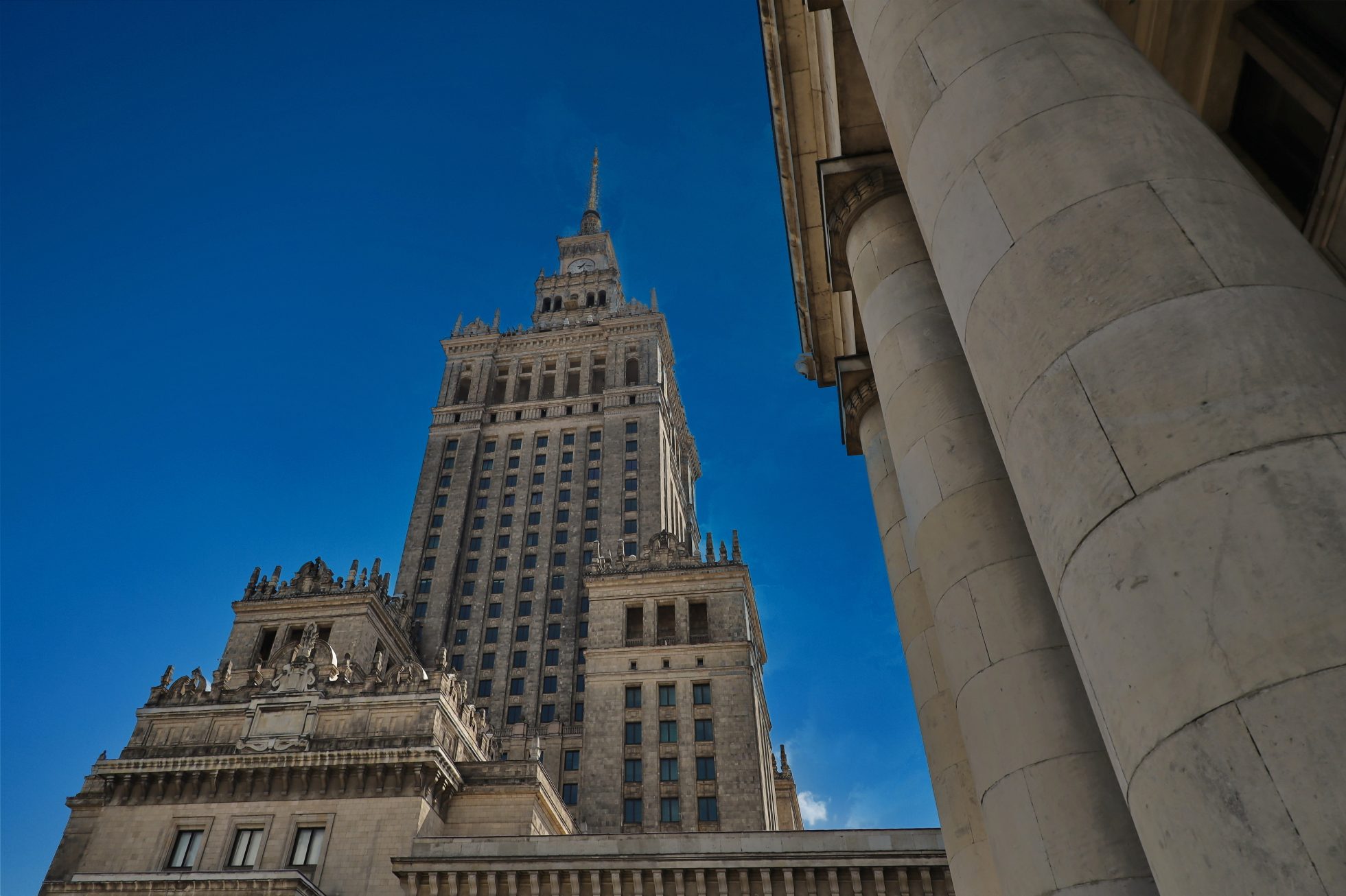
12. The mermaid is the symbol of Warsaw
The Warsaw Mermaid is one of the most important symbols of the capital, present almost everywhere. Her image can be found in the Coat of Arms of Warsaw, on monuments, and in numerous works of art.
Legend has it that the mermaid came to the Vistula from the Baltic Sea. The girl had a beautiful voice, which led to her being kidnapped by a greedy merchant who wanted to profit from her talent — that is one version of the legend. What happened next remains a subject of debate. In any case, after regaining her freedom, probably with the help of one of the fishermen, she declared that she would now protect the city and its residents from danger, thus contributing to Warsaw’s development.
It is thanks to her that Warsaw has become a place where everyone feels safe and welcome. Today, in the centre of Warsaw, in Powiśle (a district in central Warsaw), you can see a monument dedicated to the valiant Warsaw Mermaid. Choose your flight to Warsaw to see it with your own eyes.
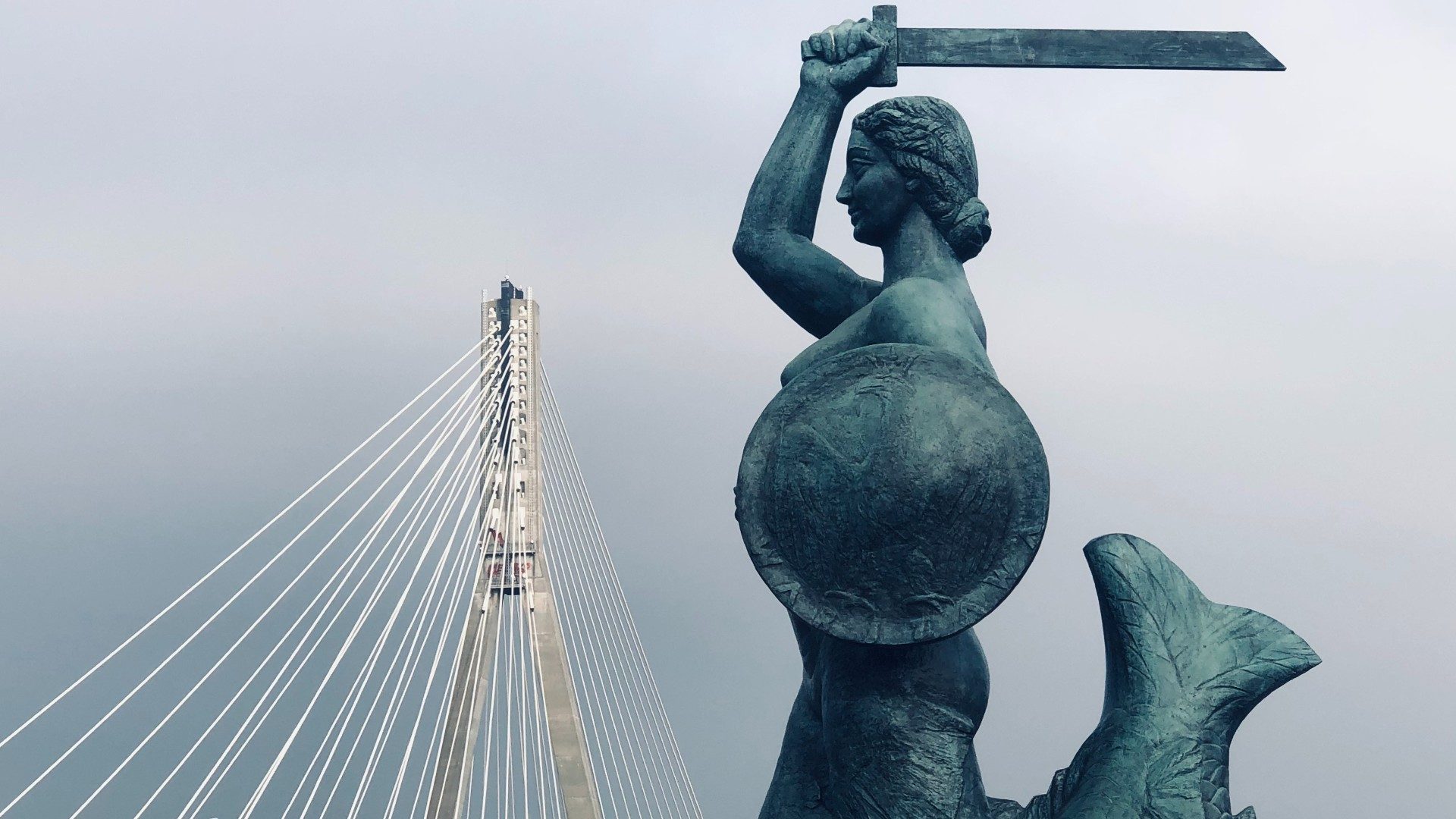
13. Warsaw is the city of kings, Royal Route and Wilanów — the residence
Warsaw is a city that has witnessed many significant historical events over the centuries. One of the most important routes is the Royal Route, which connects the Royal Castle with the palace in Wilanów. Strolling along this route, you can feel the spirit of the past and discover places associated with Polish rulers.
Wilanów, in turn, is the former residence of Polish kings, surrounded by beautiful gardens and parks. Here you can travel back in time and experience the atmosphere of a royal court. The Wilanów Palace is one of Poland's most significant monuments, attracting tourists from around the world with its majestic architecture and unique art collections.

14. The historic Warsaw Uprising left its mark on the city's architecture
The Warsaw Uprising is one of the most significant and dramatic events in Polish history. This event had an enormous impact on the lives of the capital's residents, as well as on its architecture. Street battles, bombings, and destruction affected nearly every district, leaving traces that are still visible today.
After the war, Warsaw had to rise from the ruins, and the rebuilding of the city became one of the greatest challenges for its inhabitants and authorities. This process lasted many years and required tremendous effort and dedication. As a result, today's Warsaw is a city of contrasts — where modern buildings stand alongside remnants of the past.
The scale of the destruction was unimaginable, which is why the reconstruction of Warsaw took over 20 years and involved the implementation of several plans influenced by various political upheavals. Warsaw's development continues to this day, and the capital of Poland grows more beautiful year after year. And may it stay that way!

15. The stunning roofs of Warsaw
Warsaw is a city that can be explored not only at street level but also from the perspective of its rooftops. Many buildings in the capital offer access to their terraces and roofs, from which you can enjoy a breathtaking view of the city skyline. It is here that you can truly experience the vibe of a metropolis.
One of the most popular spots to visit is the observation deck at the Palace of Culture and Science. From the height of the 30th floor, you can admire a stunning panorama of Warsaw, watch the Vistula River winding through the city, and notice the contrasts between modern skyscrapers and historic monuments.
The rooftops of the University Library — mentioned earlier — are also worth a visit. The rooftop garden at the University Library in Warsaw is one of the largest and most beautiful in Europe. Moreover, entry is free!
Across Warsaw, there are many interesting rooftops. An increasing number of hotels and restaurants now offer the chance to spend time on their roofs, where you can enjoy a good coffee or dinner while taking in the view. It’s a great opportunity to see Warsaw from a different perspective and experience its unique atmosphere. The city’s rooftops possess a certain magic — inviting you to rediscover the city while offering unforgettable experiences and the thrill of height.
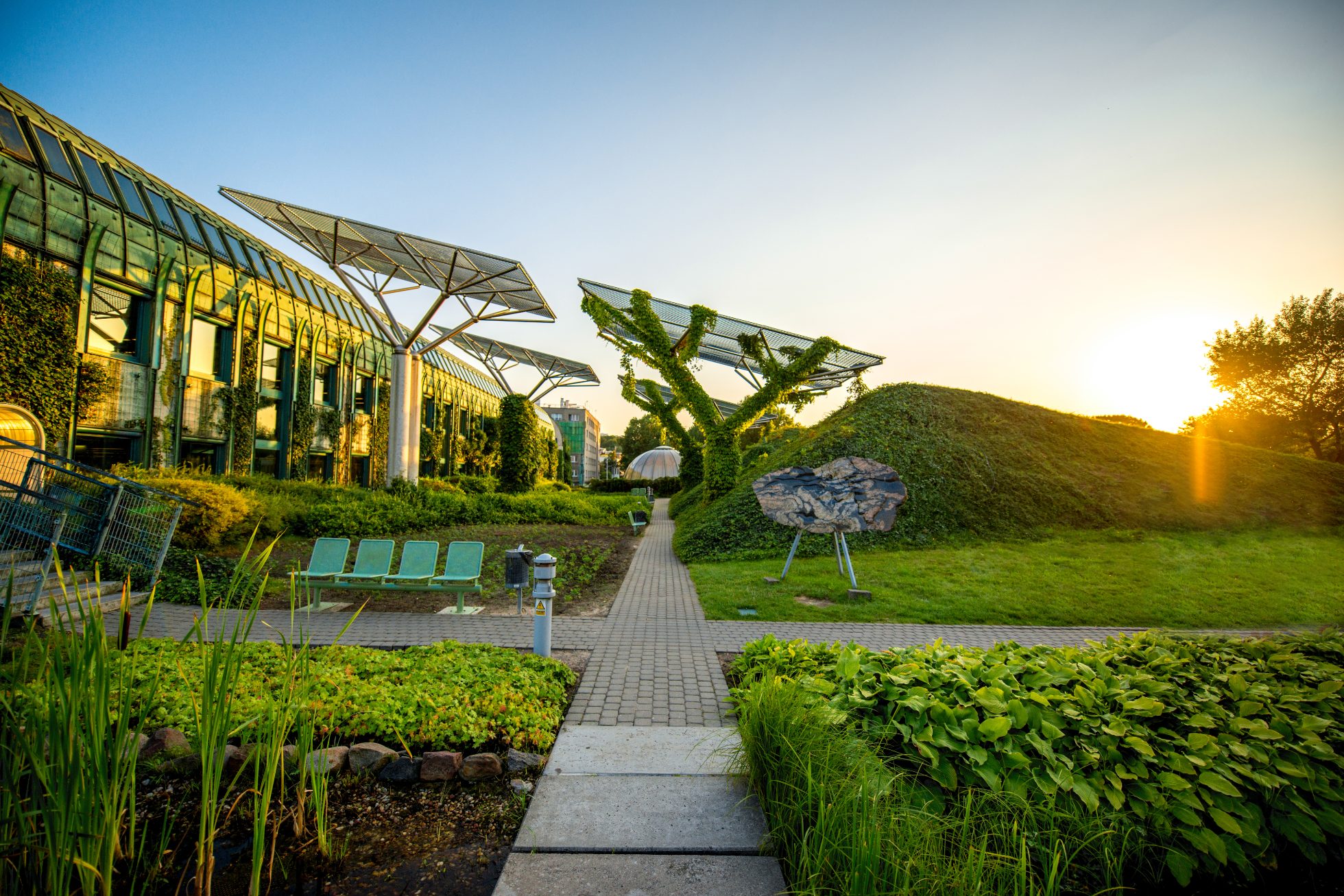
Summary
From the narrowest house in the world, through historical and administrative curiosities, to the rich musical tradition associated with Chopin, the capital of Poland has plenty to discover. Thanks to its diverse features — such as beautiful green spaces, well-developed transportation infrastructure, and a vibrant cultural scene — Warsaw is becoming an increasingly attractive place to live and visit.
Remember these fascinating facts about Warsaw because you never know when they might be helpful. For those who are eager to learn more, it’s worth exploring the available books, films, and guides that shed light on the city’s history and culture. Whether you’re a resident or a tourist, Warsaw is sure to offer unforgettable experiences and fresh perspectives — after all, it’s the largest city in Poland. Decide on a flight to Warsaw!